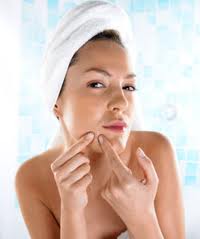How To Treat Acne Scarring

HOW TO TREAT ACNE SCARRING
40-50 Million Americans suffer from acne, of those a large percentage may end up with scars as a result. “In our Cosmetic Practice a large majority of our consultations are related to acne scarring on the face, chest, and back, states Nikki Rasmussen, RN/aesthetic laser specialist.”
Acne sufferers are very self conscious regarding their breakouts and if they are fortunate enough to resolve their acne; some are left with scars that continue to affect their self esteem.
Acne scarring is often two distinct types; the first being depressions in the skin that can be shallow or “ice-pick” scars, the second results in discoloration of the skin where the pimple originated.
First and foremost it is important to prevent acne from occurring or to treat promptly. If you can successfully prevent acne, you prevent the scarring. However for many individuals this is not a reality, as most have tried prescription acne medications such as Retin-A or even Accutane, which have failed. We utilize the BLU-U light therapy to reduce the bacteria that is the cause of acne. It most cases we see a dramatic improvement.
For those individuals with depressions in the skin, laser resurfacing with either an erbium laser or Fractionated CO2 such as the Mixto©laser may be appropriate. Determining which laser should be used on an individual depends on the person’s skin type and severity of the scarring and other factors.
For ice pick scars, a small incision or punch biopsy may be necessary to remove the deeper scar. This procedure should only be performed by a skilled surgeon to avoid an even larger scar.
Regarding the darkened pock marks we see so often, there are a variety of treatments available. For those with darker skin, chemical peels in combination with prescription strength hydroquinone works well. For lighter skinned individuals a combination of IPL with or without an erbium peel can improve skin clarity dramatically.
Most often we see clients with a mixture of 2 or 3 types of scarring and we individualize their treatment plan. I urge patients to seek out an experienced clinician, especially if they have darker skin. Most often, we don’t use fillers such as Juvederm® to plump facial scars, as the results are temporary and usually not optimal. If a practitioner is suggesting the use of filler they may not own a laser therefore, it is the only tool they have to offer.
Lastly, it is important for the client to use sunscreen if they are prone to darkened spots from a breakout. This can be a challenge in itself, as many sunscreens cause individuals to “break-out.” We usually suggest using a powder sunscreen that contains zinc and or titanium, as well as using the Clarisonic® brush which thoroughly cleanses the skin.
Nikki Rasmussen is a RN and aesthetic laser specialist at Yolo Laser Center & Med Spa located in Guilford, CT and is a full service Cosmetic Laser Center offering consultations.





